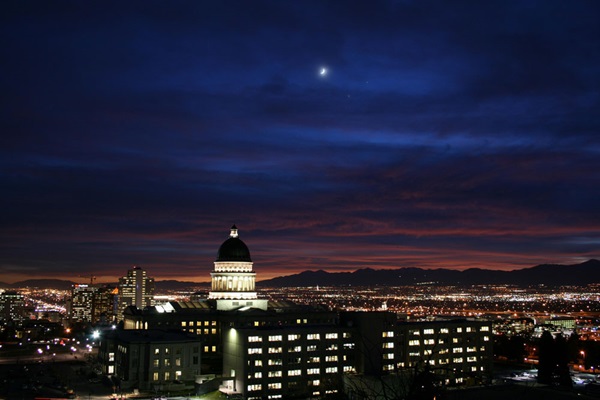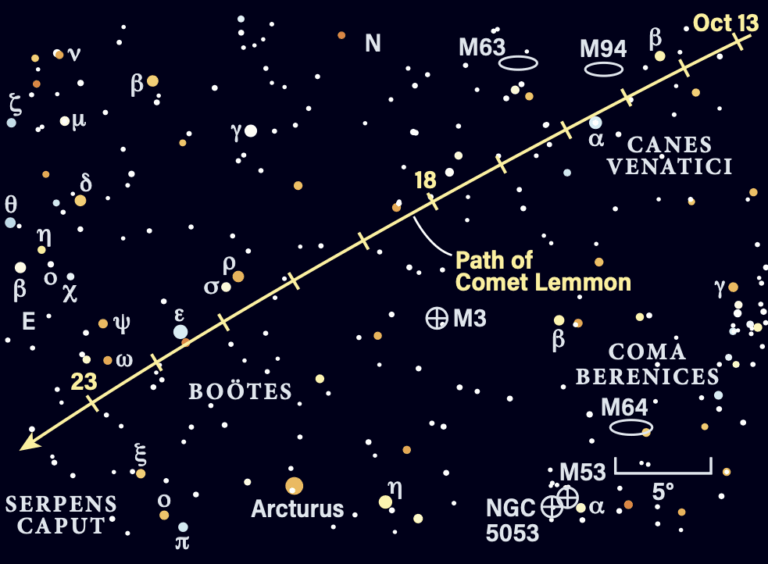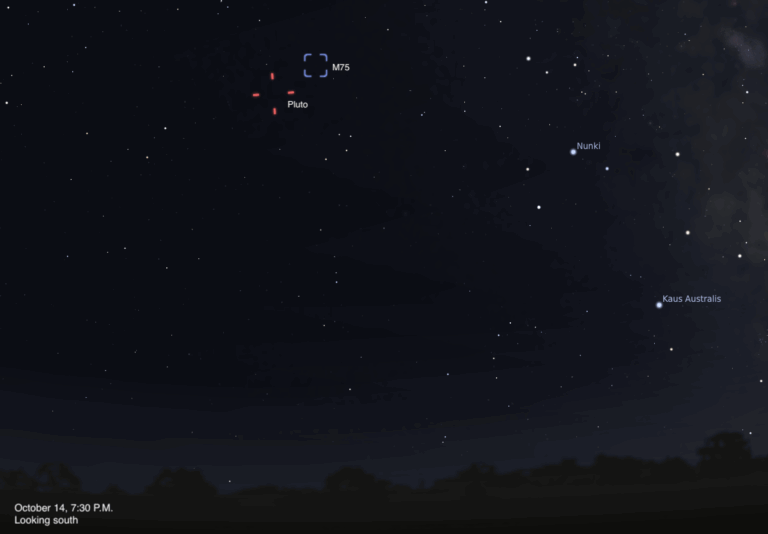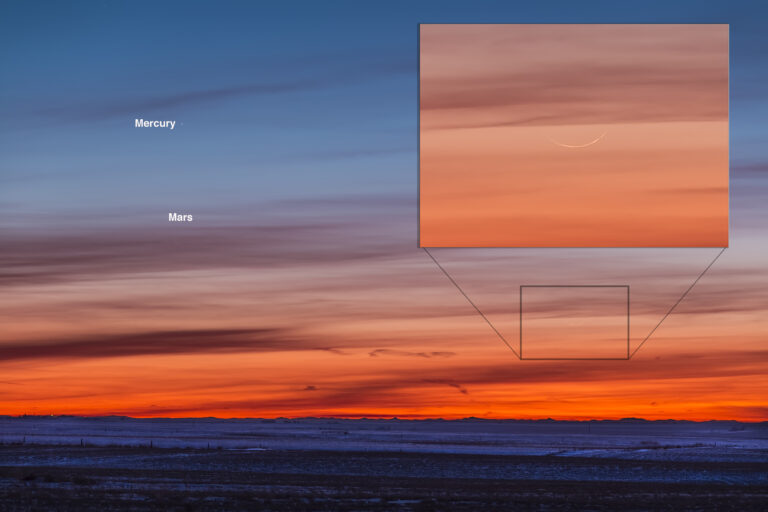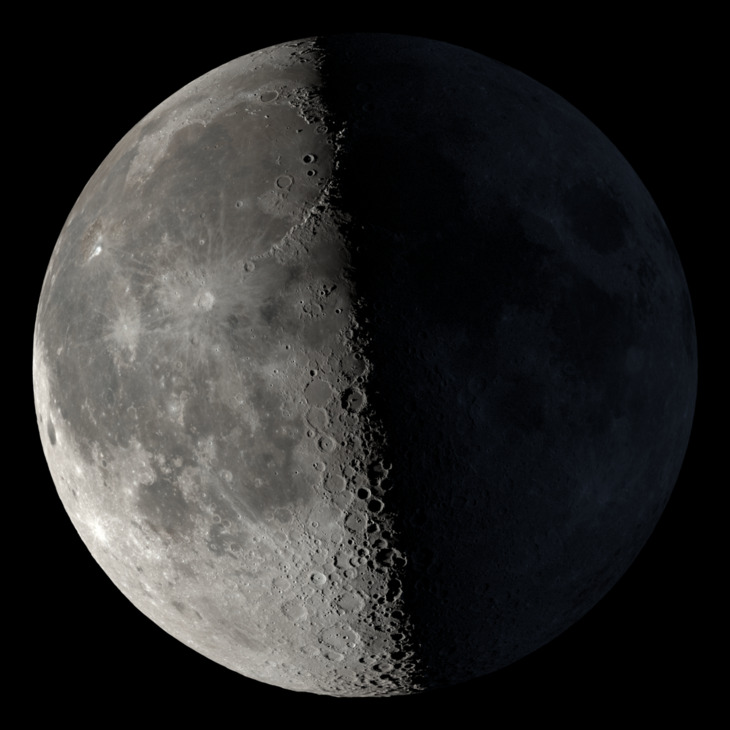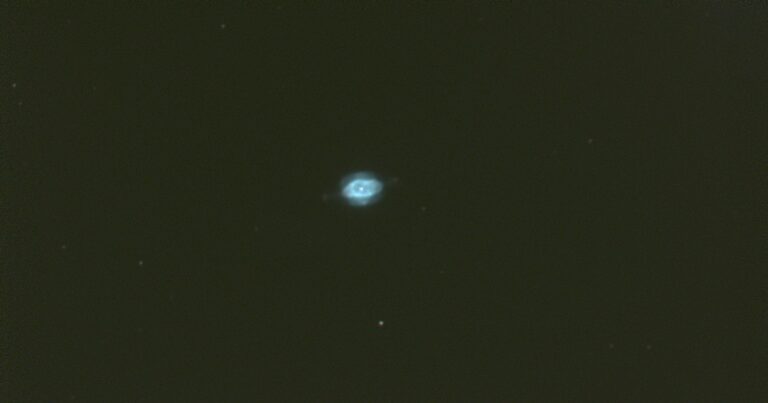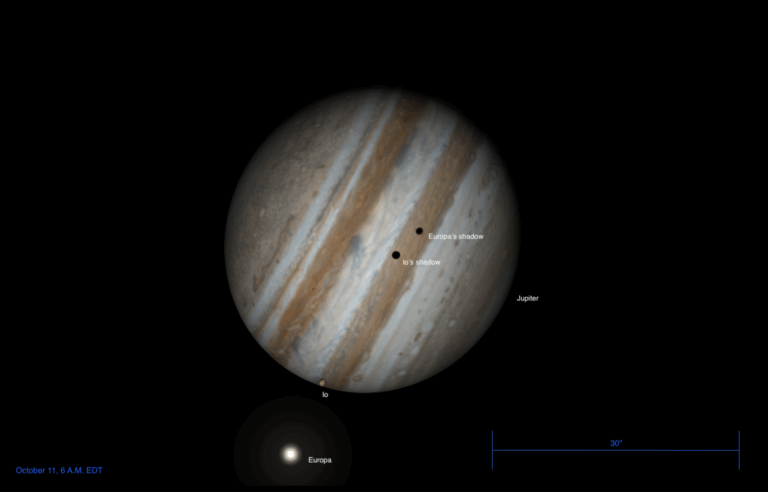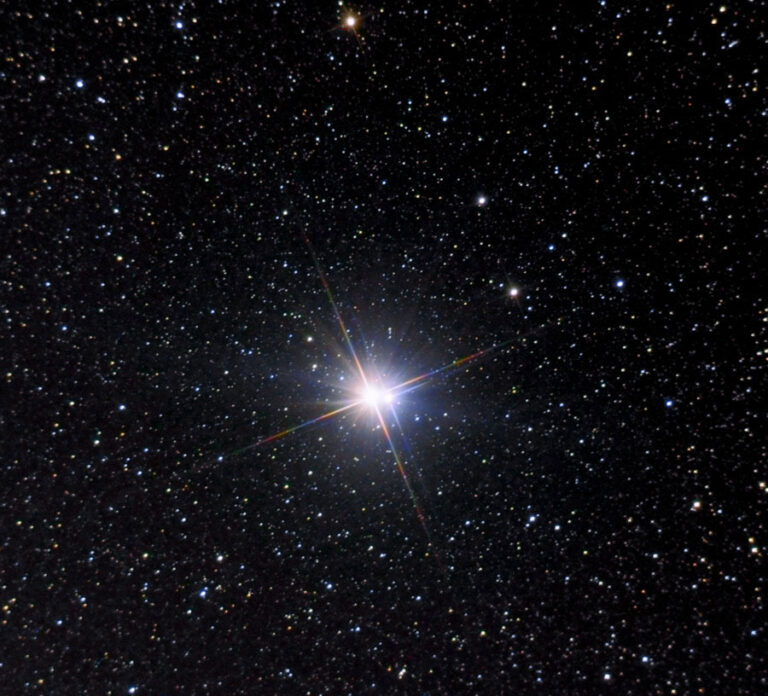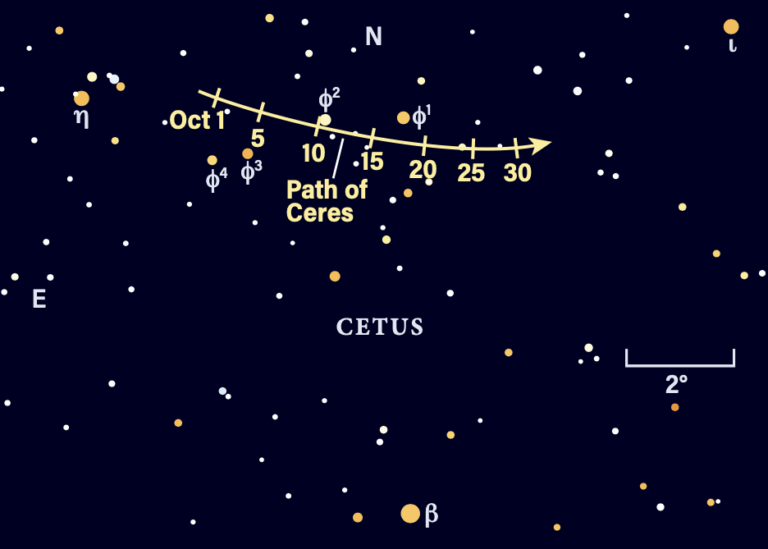Key Takeaways:
The month of March kicks off with a close conjunction of two bright naked-eye planets: Venus and Jupiter. The pair will appear closest for U.S. observers in the evening sky on March 1, leading up to the true moment of conjunction early on the 2nd, after the planets have set.
Eager skywatchers can get started shortly before sunset on Wednesday, as Venus will begin to stand out against the background sky even before the Sun has set. The bright (magnitude –3.9) planet appears roughly 30° above the western horizon at sunset and has sunk to half that altitude an hour later. Jupiter appears just 30′ to Venus’ upper left (southeast); at magnitude –2.1, it should appear shortly after sunset, again even while the sky remains bright. See how long after sunset it takes for you to make out the second bright pinprick of light against the fading twilight.
Both are bright enough to see easily with the naked eye. If you want to use magnification, do not look through binoculars, a telescope, or any other optical instrument until the Sun has fully set from your observing site; note this may occur before or after the time listed in this article, depending on your location.
However, once the Sun is below the horizon, you can safely use binoculars or a telescope to enjoy the pair. Any telescope will offer an excellent view, and observing while the sky is still somewhat light offers the benefit of keeping Venus’ bright glare from overpowering the scene. Use low magnification and a field of view about 1° across to comfortably capture both planets at the same time. Such a view offers some unique insight into the architecture of our solar system and the worlds within it.
Let’s start with Venus. The Earth-sized planet appears roughly 12″ across and doesn’t display a full face but an 86-percent-lit gibbous phase. This is because Venus is considered an inferior planet, thanks to its location between Earth and the Sun. Thus, it goes through distinct phases as seen from our planet.
Jupiter, meanwhile, stretches 34″ across — some three times as wide as Venus, despite the fact that the gas giant is currently almost five times farther from Earth. (Jupiter is some 537 million miles [864 million kilometers] away, while Venus is just 127 million miles [204 million km] distant.) This size difference, even at such varied distances, emphasizes the fact that Jupiter is our solar system’s largest planet, some 11 times the diameter of Earth (and thus, Venus, whose diameter is about 0.95 Earth).
Jupiter is also flanked by three of its four largest moons. Appearing in a line to the planet’s east are Io (closest to Jupiter), Ganymede, and Callisto. The fourth Galilean moon, Europa, is hidden behind the planet for much of the evening. It creeps out from behind the limb just before 8 P.M. CST, after the planet has set for those on the East Coast. But even then, Europa remains invisible, hidden within the long, dark shadow cast by Jupiter out into space. The moon won’t clear that shadow until about 7:10 PST, when West Coast skywatchers will see it finally reappear some 15′ east of the planet’s limb to join its fellow moons.
The two planets are located in Pisces the Fish, whose stars will begin to appear as darkness continues to fall. They will remain visible until around 8:20 P.M. local time, when this region of the sky finally sets.
The official moment of conjunction occurs the morning of March 2nd at 6 A.M. EST, when Venus passes 0.5° due north of Jupiter (though both are not visible from the U.S. at that time). But you can catch the pair again at sunset that evening, now with Venus to the upper right (northwest) of Jupiter. The two planets are still close enough (just under 1°) to capture in a single low-power field of view through a telescope and tonight, all four of Jupiter’s moons are visible. Now Europa sits closest to the gas giant on its east side, with Ganymede in the middle and Callisto farthest out. Io appears on its own west of the planet and creeps closer to the limb over time, though it never disappears behind it before the system has set for U.S. observers.
Wednesday, March 1
Sunrise: 6:33 A.M.
Sunset: 5:52 P.M.
Moonrise: 12:14 P.M.
Moonset: 3:23 A.M.
Moon Phase: Waxing gibbous (73%)
Thursday, March 2
Sunrise: 6:32 A.M.
Sunset: 5:53 PM
Moonrise: 1:09 P.M.
Moonset: 4:12 A.M.
Moon Phase: Waxing gibbous (80%)
*Times for sunrise, sunset, moonrise, and moonset are given in local time from 40° N 90° W. The Moon’s illumination is given at 12 P.M. local time from the same location.

